Astro based models for
Intraday - Parallax and Aberration
Parallax
I believe the parallax is the one of the most underestimated topics in
astrology. Long time enough I could not understand why it is so. Only recently I
have figured out why - it looks like everything is very simple, and the problem
we face with is just a computational problem.
We cannot use conventional ephemeris to calculate a planetary position taking
parallax into account, because it depends on our location, i.e. the planetary
position calculated for Moscow will differ from the same planet's position for
New York (though the Universal time is the same). If we plan to deal with
parallax, we would need to have different ephemeris tables - one for Moscow and
another for New York. The thing is more confusing if we use the astrological
software. Some programs even do not provide any information on parallax, and
users sometimes accept parallax as some very specific astronomical parameter
(like nutation, libration and other).
To explain what the parallax is, I would use very familiar to astrologers
phenomena - Eclipses.
Look how Solar Eclipse path looks:
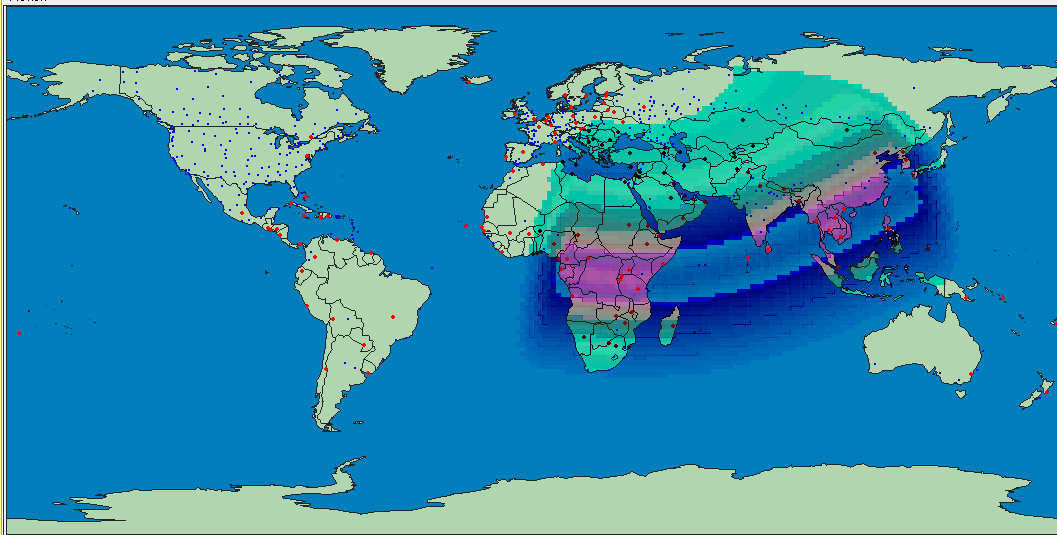
If we observe this Eclipse from the satellite, we would see the shadow
of the Moon that passes through the Earth's surface. From the point of view of
the Earth's inhabitant, we are observing how the Moon's disk covers the Sun.
BUT! we can observe this greatest phenomenon from certain places on the Earth,
and somewhere the Eclipse is visible, while it is not in some other places. And
the eclipse path simply points at these places on the Earth where the eclipse is
visible. People even make special trips to watch this great phenomenon (praying
for the clear weather).
Why it is so? I think it is obvious: the Moon's position is different at
different places on the Earth; this difference is called parallax. For the Moon,
the parallax reaches 1 degree of longitude.
In regards to parallax, you should always remember these things:
Planetary GEOCENTRIC position has NO PARALLAX - as the position of the
astronomical body is observed from the CENTER OF the EARTH.
Planetary TOPOCENTRIC position is defined WITH PARALLAX - as the position of
the astronomical body is observed from SOME SPECIFIC LOCATION ON THE EARTH'S
SURFACE.
Pro versus Contra
Here are my arguments that the parallax phenomenon should be taken into
account.
1)
Old masters (before the creation of ephemeris tables) used the real positions of
planets, i.e. topocentric positions - with parallax.
2)
For all local events I prefer to use parallax, for phenomena that concern
worldwide events better use the geocentric system (no parallax). Sometimes it is
difficult to figure out this difference and decide whether parallax should be
considered; in this case better try both variants.
3)
Here you can see 1 min price chart for DJI together with diagrams that show the
Moon position in each degree of Zodiac; one diagram shows the Moon position with
parallax, another without parallax:
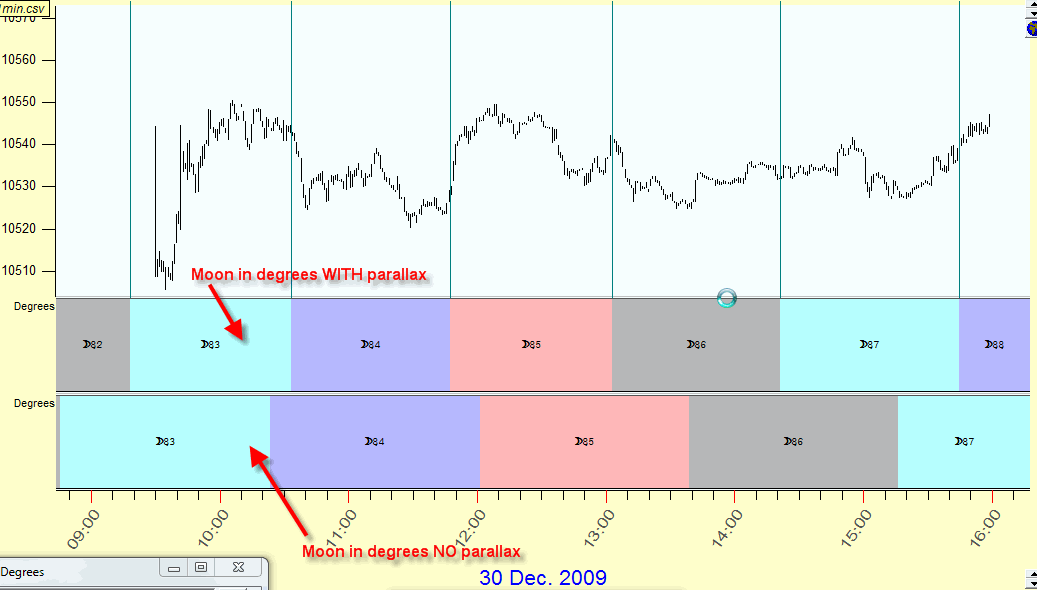
It
would be good if I would be able to state that the diagram with parallax points
at significant changes in price more accurate (which you can see yourselves on
the example above). However, I will not do that. One, two or several more
examples are not enough. This issue needs more research that takes much more
time.
For
now, I recommend to use Planetary Bars charting tool:
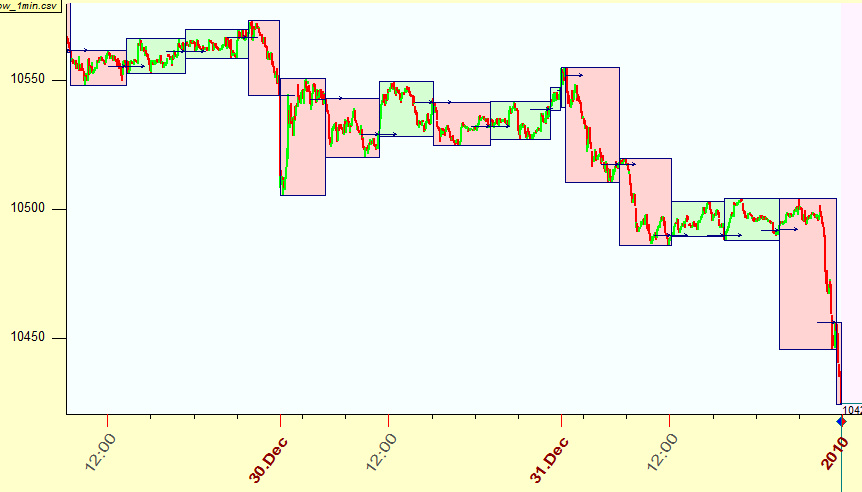
This tool draws one degree of the Moon position Planetary Bars
with parallax. It seems to me these bars point at the moments of mood changes on
the stock market.
Aberration
Aberration effect concerns slow planets mostly. I will
demonstrate this effect using some example.
This is Jupiter bars charting tool:
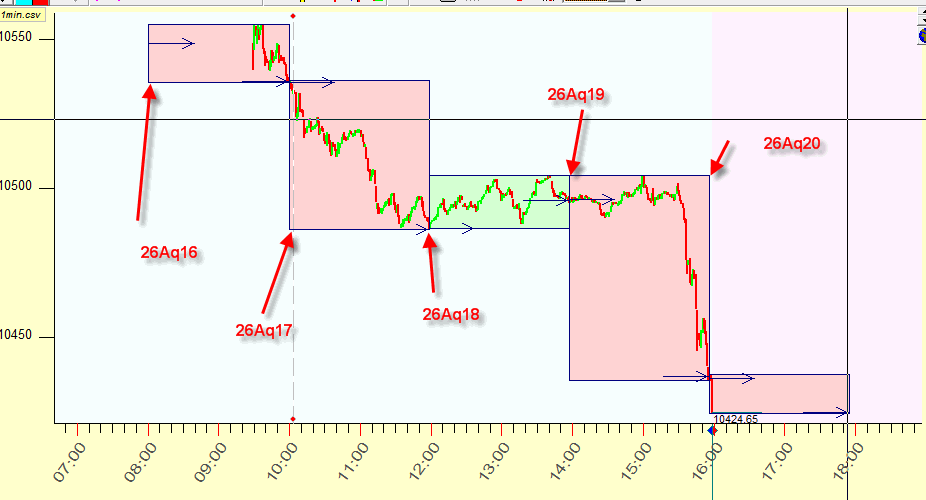
These bars correspond to 1 minute step of Jupiter movement; in
other words, to compose the price bar we use the time interval that corresponds
to 1 minute of Jupiter's movement. For intraday price data and slow planets, we
need to use a very small step.
In the example above, to calculate the Jupiter movement we set
the aberration parameter ON.
Now look at the same 1 minute Jupiter bars without aberration
i.e. aberration parameter is OFF; this how it looks:
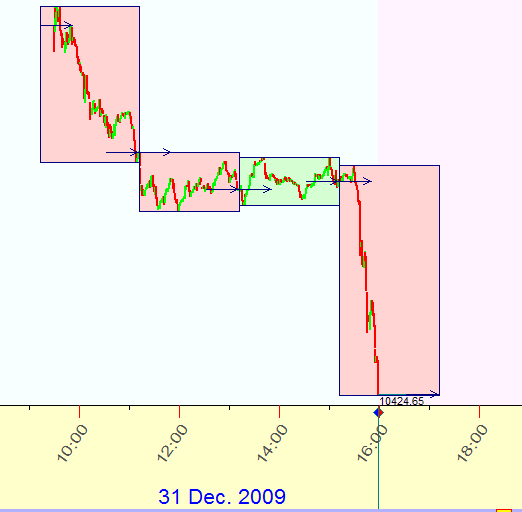
As you see, these two pictures of the same thing look totally
different. Why is it so? The difference is caused by the aberration effect, it
is the difference between the real and apparent position.
When we watch at the Sun, we actually see not the real Sun
position, but the position of the Sun 8 minutes ago. 8 minutes is the time
needed for the light to cover the distance between the Sun and the Earth. For
Jupiter, the light needs travel for a bigger distance, and the difference
between the actual and apparent position of this planet is more significant -
more than one hour.
So you should always remember:
Planetary
REAL position - aberration parameter is OFF;
Planetary
APPARENT (VISIBLE) position - aberration parameter is ON.
By
default, the aberration parameter is ON. It reflects the modern physics' view on
the nature of the spreading the light/information. (In brief, the theory states
that the light travels with some speed, so it needs some time to get from one
point to another. There are other theories as well; one of them states that the
information signal might reach the observer immediately, while another suggests
something intermediate - customized aberration. This issue needs more research,
and there is no final answer yet).
The
effect of aberration is especially important for slow planets, while the
parallax is important for the Moon.




